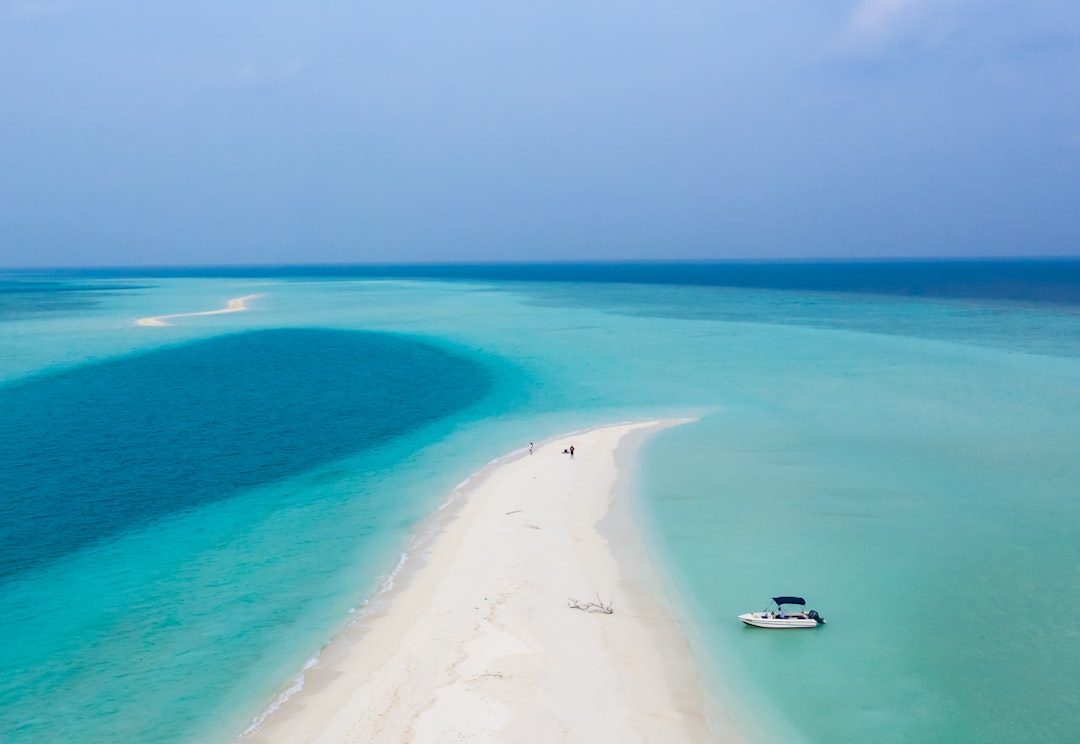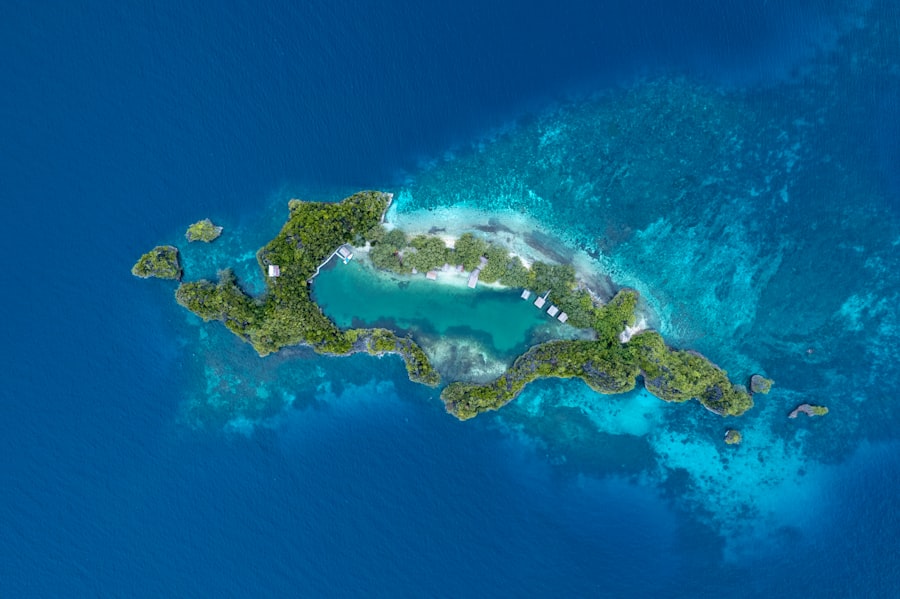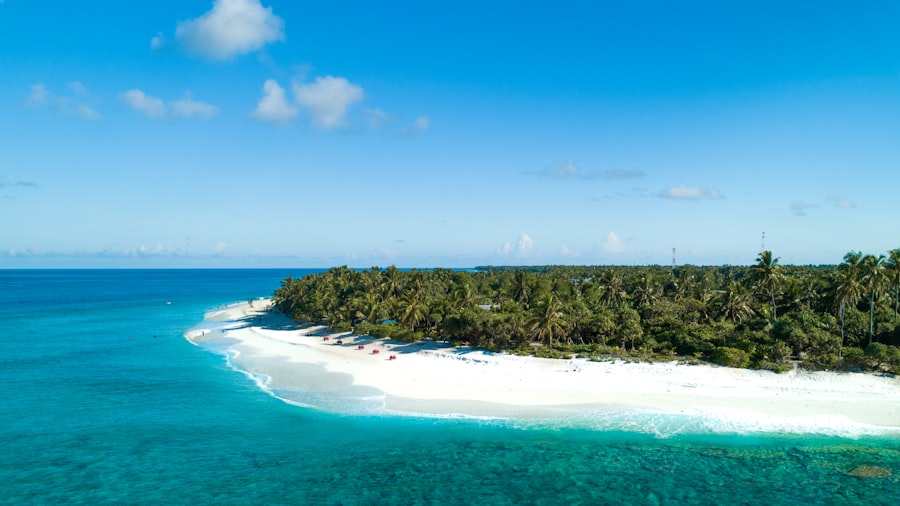
Kiribati, a remote island nation located in the central Pacific Ocean, is a unique and fascinating destination that often escapes the attention of mainstream tourism. Comprising 33 atolls and reef islands, it spans a vast area of ocean, yet its total landmass is relatively small, making it one of the most dispersed countries in the world. The nation is situated along the equator and straddles both sides of the International Date Line, which gives it a distinctive position in terms of time zones and cultural interactions.
Kiribati’s isolation has fostered a rich tapestry of traditions and customs that reflect its Polynesian heritage, making it a captivating place for those interested in exploring the nuances of island life. The name “Kiribati” is derived from the local pronunciation of “Gilberts,” referring to the Gilbert Islands, which are part of the nation. The country gained independence from British colonial rule in 1979, and since then, it has been navigating the challenges of modernity while striving to preserve its cultural identity.
Kiribati is not only known for its stunning natural beauty but also for its resilience in the face of climate change, as rising sea levels threaten its very existence. This juxtaposition of breathtaking landscapes and pressing environmental issues makes Kiribati a compelling subject for study and exploration.
The Gilbert Islands are the most populous and include Tarawa, the capital, which serves as the political and economic hub of the nation.
The Phoenix Islands, while less inhabited, are recognized for their ecological significance and are home to one of the largest marine protected areas in the world. The climate in Kiribati is tropical, characterized by warm temperatures year-round, with average highs ranging from 28°C to 32°C (82°F to 90°F). The islands experience two main seasons: a wet season from November to March, marked by increased rainfall and occasional tropical storms, and a dry season from April to October.
The geography of Kiribati is predominantly flat, with most islands rising only a few meters above sea level. This low-lying nature makes them particularly vulnerable to climate change, as even minor fluctuations in sea levels can lead to significant land loss and displacement of communities.
Key Takeaways
- Kiribati is a small island nation in the Pacific Ocean, known for its stunning natural beauty and unique culture.
- The geography of Kiribati consists of 33 atolls and reef islands, with a tropical climate and beautiful beaches.
- Historical and cultural landmarks in Kiribati include the sacred site of Te Umwanibong, the WWII relics on Betio Island, and the Kiribati National Library and Archives.
- Must-see places and sights in Kiribati include the Phoenix Islands Protected Area, the Christmas Island Wildlife Sanctuary, and the stunning Fanning Island.
- Local cuisine in Kiribati features fresh seafood, coconut, and taro, with popular dishes like i-Kiribati, palusami, and coconut crab.
Historical and Cultural Landmarks in Kiribati

II. The islands of Kiribati have been inhabited for over 2,000 years, and their history is intertwined with the broader history of the Pacific region. To learn more about the history of Kiribati, you can visit the Encyclopedia Britannica for a comprehensive overview.
One of the most significant historical landmarks is the Japanese-built bunkers on Tarawa, remnants from the fierce battles fought during the Pacific War. The Battle of Tarawa in 1943 was a pivotal moment in World War II, where U.S. forces faced fierce resistance from Japanese troops.
Today, these bunkers serve as a somber reminder of the sacrifices made during wartime and are often visited by those interested in military history.
| Historical Landmark | Japanese-built bunkers on Tarawa |
|---|---|
| Location | Tarawa |
| Significance | Remnants from the Battle of Tarawa in 1943 |
| War | Pacific War (World War II) |
| Participants | U.S. forces and Japanese troops |
| Current Use | Somber reminder of wartime sacrifices |
| Visitors | Those interested in military history |
Culturally, Kiribati is steeped in traditions that have been passed down through generations. The maneaba, or meeting house, is a central feature in many villages and serves as a gathering place for community discussions, celebrations, and ceremonies. These structures are not only architectural landmarks but also embody the social fabric of Kiribati society.
Traditional practices such as weaving, fishing, and dance play an integral role in daily life and are celebrated during festivals like Te Mauri Festival, which showcases local arts and crafts while promoting environmental awareness.
Must-See Places and Sights in Kiribati
When visiting Kiribati, there are several must-see places that offer a glimpse into the natural beauty and cultural richness of the islands. One such destination is Kiritimati Island, renowned for its pristine beaches and vibrant marine life. As one of the largest atolls in the world, Kiritimati is a paradise for eco-tourists and adventure seekers alike.
The island’s lagoons are teeming with fish, making it an ideal spot for snorkeling and diving. Additionally, Kiritimati is famous for its birdwatching opportunities; species such as the frigatebird and red-footed booby can be observed nesting along its shores. Another notable site is Tarawa’s Betio Beach, which holds historical significance due to its role in World War
Visitors can explore the remnants of war fortifications while enjoying the stunning views of turquoise waters. The beach is also a popular gathering place for locals who engage in traditional fishing practices or simply relax under the sun. For those interested in cultural experiences, participating in a traditional dance performance or attending a local feast can provide insight into the vibrant customs that define Kiribati’s identity.

Local Cuisine and Culinary Delights in Kiribati
The culinary landscape of Kiribati reflects its geographical context and cultural heritage. Traditional dishes often feature fresh seafood, coconuts, and root vegetables such as taro and breadfruit. One popular dish is “tebuka,” which consists of fish marinated in coconut milk and served with rice or taro.
This dish exemplifies the islanders’ reliance on local ingredients while showcasing their culinary creativity. Another staple is “palu sami,” made from taro leaves cooked with coconut cream and often accompanied by fish or meat. This dish highlights the importance of coconuts in Kiribati cuisine; they are used not only for cooking but also for making beverages like “nukuma,” a refreshing drink made from fermented coconut sap.
Street food vendors also offer an array of snacks such as “baked breadfruit” or “fish balls,” providing visitors with an authentic taste of local flavors.
Tips for Traveling to and Exploring Kiribati
Traveling to Kiribati requires careful planning due to its remote location and limited infrastructure. Flights to Tarawa are available from several major cities in the Pacific region, but travelers should be prepared for potential delays or cancellations due to weather conditions. It is advisable to book accommodations in advance, as options can be limited on some islands.
While Tarawa offers more amenities, exploring outer islands like Kiritimati or Abaiang can provide a more authentic experience of island life. When exploring Kiribati, it is essential to respect local customs and traditions. Engaging with locals can enhance your experience; many residents are welcoming and eager to share their culture with visitors.
Learning a few basic phrases in Gilbertese can go a long way in building rapport with the community. Additionally, travelers should be mindful of environmental conservation efforts; participating in beach clean-ups or supporting local initiatives can contribute positively to preserving Kiribati’s fragile ecosystems. In conclusion, Kiribati stands as a testament to resilience amid challenges posed by geography and climate change.
Its rich history, vibrant culture, stunning landscapes, delectable cuisine, and warm hospitality make it an extraordinary destination for those willing to venture off the beaten path. Whether you are drawn by its natural beauty or intrigued by its cultural heritage, Kiribati offers an unparalleled experience that lingers long after your visit has ended.
If you’re intrigued by the unique destinations and cultural insights found in the article about Kiribati, you might also enjoy exploring more about other places. For instance, the article on Georgia Facts and Places to Visit offers a fascinating glimpse into the rich history, diverse landscapes, and vibrant culture of Georgia. Just as Kiribati presents a unique island experience, Georgia offers a blend of historical sites, natural beauty, and modern attractions that cater to a variety of interests. Whether you’re a history buff, nature lover, or city explorer, this article provides valuable insights and suggestions for anyone planning a visit or simply wishing to learn more about Georgia’s unique offerings.
FAQs
What is Kiribati?
Kiribati is a sovereign state in the central Pacific Ocean consisting of 33 atolls and reef islands. It is a member of the Commonwealth of Nations and the United Nations.
What are some interesting facts about Kiribati?
Kiribati is the only country in the world to fall within all four hemispheres, it is the only country to be situated within all four hemispheres. It is also one of the least visited countries in the world, despite its stunning natural beauty.
What are some popular places to visit in Kiribati?
Some popular places to visit in Kiribati include the Phoenix Islands Protected Area, the World War II relics on Tarawa, and the beautiful beaches of the Line Islands.
What are some of the natural sights in Kiribati?
Kiribati is known for its stunning coral atolls, pristine beaches, and crystal-clear waters. Visitors can also enjoy birdwatching, snorkeling, and diving in the surrounding waters.
What is the climate like in Kiribati?
Kiribati has a tropical climate, with warm temperatures year-round. The islands are prone to natural disasters such as cyclones and rising sea levels due to climate change.



